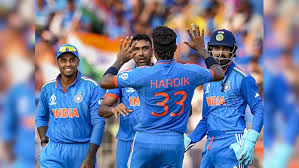11 March 2025 The Hindu Editorial
What to Read in The Hindu Editorial( Topic and Syllabus wise)
Editorial 1 : Miles to Go: On Change in Manipur, The Road to Normalcy
Introduction
- The Union Government removed the N. Biren Singh-led government in Manipur and imposed President's Rule to restore normalcy in the state.
- This decision was influenced by prolonged ethnic strife and internal divisions within the ruling Bharatiya Janata Party (BJP).
- The imposition of President's Rule was seen as a step towards controlling violence and addressing governance challenges.
Steps Taken by the Government
- Imposition of President’s Rule:
- The government imposed President's Rule due to the failure of the state government to control ethnic violence.
- Weapon Recovery:
- The government set a deadline for non-State groups to surrender weapons acquired from police constabularies.
- However, only one-third of the 3,000 missing weapons have been returned so far.
- Ensuring Free Movement:
- Efforts were made to remove blockades on highways for free movement of people and goods.
- This move faced resistance in the Kangpokpi district, resulting in violence and casualties.
Challenges Faced
- Partial Weapon Surrender:
- Despite the government's efforts, a majority of the missing weapons are yet to be recovered, particularly from the Imphal Valley.
- Ethnic Demands:
- The Kuki-Zo community demanded Union Territory status or a separate arrangement for their region, opposing the government’s initiative.
- This demand posed a serious threat to the peace process and deepened ethnic divisions.
- Resistance from Naga Communities:
- The Naga community living in the hill districts also opposed any move to divide Manipur based on ethnicity.
- This further complicated the government’s efforts to restore peace.
Government's Response and Future Course of Action
- Peace Dialogue:
- The government must initiate dialogue with both ethnic communities (Meitei and Kuki-Zo) to bridge differences.
- It must firmly reject violent threats and discourage demands for division.
- Weapon Recovery:
- The government must intensify efforts to recover remaining weapons and eliminate unauthorized arms possession.
- Leadership Intervention:
- Prime Minister Narendra Modi and the Union Home Ministry must directly engage with communities to foster peace.
- The central government should ensure that only the state has the legitimate control over arms.
- Economic Revival:
- Manipur has faced severe economic setbacks due to prolonged violence and inflation.
- The government should focus on economic rehabilitation, create employment opportunities, and promote infrastructure development.
Conclusion
- Restoring peace in Manipur is a long and complex process that requires strong political will, effective governance, and inclusive dialogue.
- The Union Government must remain neutral, avoid favoring any community, and focus on bringing back normalcy.
- Addressing economic challenges and ensuring security are essential to restoring harmony in the state.
- The long-term solution lies in unifying communities, promoting development, and strengthening law and order.
Editorial 2 : Limited-Overs Form: On Cricket and the Indian Team
Introduction
- India's dominance in limited-overs cricket was reaffirmed with their triumph in the ICC Champions Trophy 2025, defeating New Zealand by four wickets.
- India’s success rate in ICC tournaments has been outstanding, with 23 wins in 24 matches (95.83%) across the 2023 ODI World Cup, 2024 T20 World Cup, and 2025 Champions Trophy.
- Despite geopolitical tensions, India played in Dubai after the government refused play in Pakistan, the official host.
India’s Performance in ICC Champions Trophy 2025
- Group Stage Success:
- India defeated Bangladesh, Pakistan, and New Zealand in the group stage.
- This ensured a strong momentum heading into the knockout stages.
- Semifinal Victory:
- India overcame Australia in the semifinal, setting the stage for the final against New Zealand.
- Final Against New Zealand:
- New Zealand posted a target of 251/7 on a sluggish pitch.
- India’s spinners (Varun Chakaravarthy, Ravindra Jadeja, Axar Patel, Kuldeep Yadav) played a key role in restricting New Zealand’s score.
- Rohit Sharma’s 76 runs and a solid contribution from the middle order led India to chase down the target with an over to spare.
Key Factors for India’s Success
- Effective Spin Strategy:
- Fielding four spinners (Chakaravarthy, Jadeja, Axar, Kuldeep) on a slow pitch gave India an upper hand.
- Strong Batting Depth:
- Contributions from Rohit Sharma, Shreyas Iyer, K.L. Rahul, and Hardik Pandya ensured that India comfortably chased the target.
- The depth of the squad was evident as players like Rishabh Pant, Suryakumar Yadav, and Ishan Kishan did not feature in the playing XI.
- Balanced Bowling Attack:
- Despite the absence of Jasprit Bumrah, the return of Mohammed Shami helped stabilize the bowling attack.
Challenges and Future Prospects
- Test Cricket Struggles:
- India has faced setbacks in Test cricket, including losses to New Zealand at home and Australia away.
- Maintaining dominance in all formats is crucial.
- Team Selection and Planning:
- With the 2027 ODI World Cup approaching, selectors must focus on:
- Nurturing young talents.
- Strategic planning to sustain dominance.
- Managing the transition phase of senior players like Virat Kohli and Rohit Sharma.
- With the 2027 ODI World Cup approaching, selectors must focus on:
- Maintaining Consistency:
- While limited-overs cricket has been a strength, ensuring Test cricket success will be important for overall dominance.
Conclusion
- India’s victory in the ICC Champions Trophy 2025 highlighted their dominance in white-ball cricket.
- With a strong bench strength, solid leadership, and consistent performance, India is poised for continued success.
- However, the selectors must start planning for the 2027 ODI World Cup and build a balanced team for all formats.
- Sustaining dominance across all formats and managing the transition of senior players will determine India’s long-term cricketing success.


